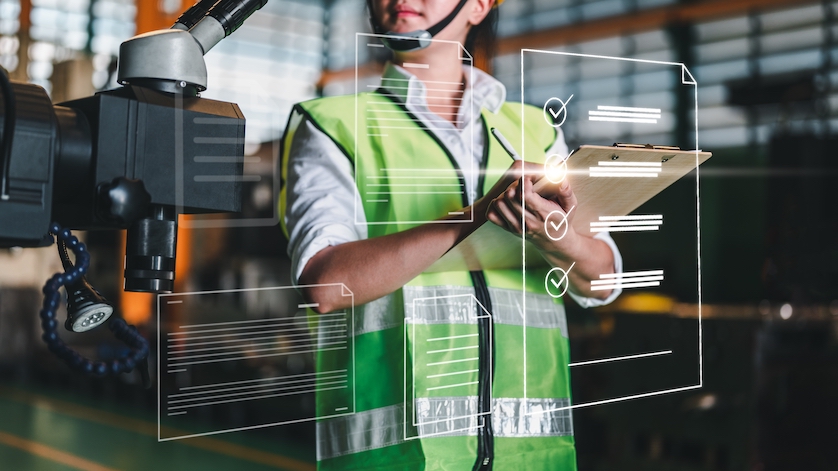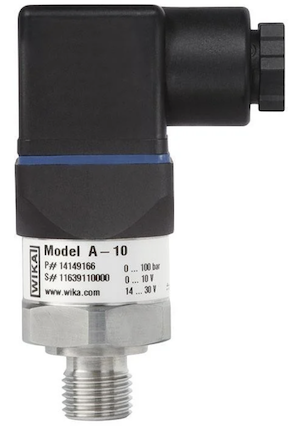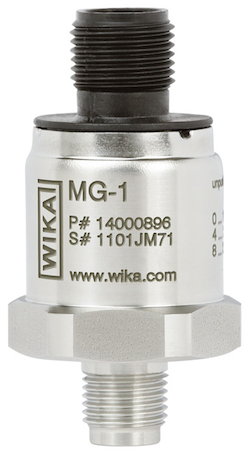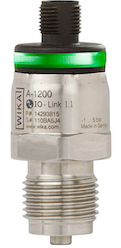
Pressure sensors come in many different types and seemingly endless configurations. To select the right pressure transducer or pressure transmitter, users should consider where and how it will be used, the application’s demands on the instrument, and whether certain features are necessary.
Some customers want the least expensive pressure sensors that will get the job done. Others prefer ones with the most features – all the bells and whistles that the market has to offer. The reality is that there is no overall best pressure sensor. There is only the smartest choice for a particular application.
Factors to Consider When Choosing a Pressure Sensor
When customers ask me to help them decide which pressure sensor to get and how to configure it, I start by “interviewing” them. My role is to prevent them from spending extra money for unnecessary features and functions. On the other hand, underspending on pressure sensors, or choosing the wrong type, could risk the safety and efficiency of the entire process or facility.
These are some of the things I ask customers about before giving them my recommendation:

A-10 pressure transmitter
1. What is the application?
This is the most important question, and the more details a customer can give me, the better. I want to fully understand the application in order to figure out the specific demands on the instrument.
Basically, will the pressure sensor be used in general industrial applications like hydraulic power units and pumping systems? In that case, the A-10 pressure transmitter is an excellent option. Or will it be in more demanding industrial applications, such as ones with extreme conditions or what is found in research and development? Sanitary, aseptic, and ultra-high purity (UHP) applications also have their own instrumentation requirements.
2. What is the media?
This question is related to details about the application, as special media require special versions of pressure sensors. For example, when working with food and beverages, sensors should have a higher cleanliness level, specific process connections, and food-compatible transmission fluid – or no transmission fluid at all. If a customers were building a new plant, I might recommend the DMSU22SA in-line process transmitter, while the S-20 superior pressure transmitter is a good retrofit solution.

MG-1 pressure sensor for medical gases
For viscous fluids or liquids that contain solids, the S-11 flush pressure transmitter is optimally designed for media that would clog the pressure channel of conventional process connections.
Pressure sensors also come in different oil- and grease-free versions for oxygen or hydrogen service. For example, the MG-1 pressure sensor was designed specifically for the storage and distribution of oxygen and other medical gases, as only materials that are suitable for oxygen applications are used. And due to the risk of permeation and embrittlement, hydrogen applications require that sensors’ wetted parts be made of special materials like 316L stainless steel and Elgiloy®.
3. What is the operational environment?
I want to know what temperatures – both ambient temperatures and process temperatures – the pressure transducer or transmitter will be exposed to. This is because temperature has a large effect on pressure sensor accuracy. It is also important to know if the sensor will experience pressure spikes/pulsation, what process connection is desired, along with any necessary sealing materials.
Moisture and water, one of the most common causes of pressure sensor failure, is another important consideration. A higher IP rating is needed if the sensor is used in the following locations or situations:
- Outdoors or in washdown environments: IP67
- Submersible applications: IP68
- High-pressure steam: IP6K9K

MH-4 OEM pressure sensor
Industrial vehicles and machine are subject to harsh working conditions – dust, precipitation, vibration, shock, and extreme temperatures – that are not applicable in most other applications. That’s why WIKA manufactures two OEM pressure sensors specifically for the extreme conditions control of mobile machines: the MH-4 pressure sensor and MH-3-HY pressure sensor for hydrogen-powered vehicles like forklifts and order pickers.
Hazardous areas call for an intrinsically safe or explosion-proof pressure sensor. These two types are similar but not interchangeable. An intrinsically safe pressure transmitter, like the IS-3, uses a low level of power so that it would not cause an ignition. On the other hand, an explosion-proof pressure transmitter like the E-10/E-11 is designed to withstand explosions and to contain any flames, sparks, and hot gases that are produced, thanks to its flameproof enclosure.
4. What is the desired output signal?
Another important consideration when selecting and configuring a pressure sensor is the desired output signal. WIKA pressure sensors are available in various analog signals, from 4 … 20 mA and 20 … 4 mA to battery-powered (low-power) signals like DC 1 … 5 V.

A-1200 pressure sensor with IO-Link
Industrial IoT call for wireless digital signals, sometimes over long distances. The A-1200 pressure sensor with IO-Link communication and PNP or NPN switching output is ideal for use in smart factories. Other digital options include the CAN-based protocols CANopen and J1939, as well as USB outputs.
5. What is the desired accuracy?
Different applications call for different accuracy specifications. For refrigeration and HVAC applications, a non-linearity using the BFSL (best fit straight line) method of ≥ ±0.6% is sufficient. On the other end of the spectrum is a non-linearity of ≤ ±0.04% for the precision measurements required for test benches, calibration, laboratories, and certain machine building applications.
6. Pressure considerations
The first consideration when configuring a pressure sensor is the type of pressure to be measured. There’s gauge pressure (working pressure), absolute pressure, and vacuum/low pressure.

HP-2 pressure sensor
The second pressure consideration is the measuring unit: psi, bar, mPa, kPa, etc.
Finally, what is the desired pressure range? This depends on the application’s operating range as well as a comfortable buffer to account for possible exposure to pulsation and pressure spikes. WIKA pressure sensors cover an extremely wide range, from −30 inHg … 0 psi to 0 … 20,000 psi. For the highest pressure applications, like waterjet cutting, we offer the HP-2 pressure sensor with a measuring range as high as 0 … 217,500 psi. Very few pressure sensors in the world can reliably measure pressures of this magnitude.
Features vs. Odds of Failures: Compromises When Choosing a Pressure Sensor
There’s a balancing act when it comes to selecting a pressure sensor. Extra features and functionalities are great and often necessary, but with them comes the greater possibility of sensor failure.
In general, the more complex the sensor design, the less adaptable it is. For example, a display for onsite pressure readings is a very useful feature. On the other hand, having a display:
- Increases the instrument’s size – a consideration if space is at a premium
- Increases its power consumption – a consideration if you want it to run on batteries
- Reduces the sensor’s operating temperature range
- Makes the instrument more susceptible to mechanical damage, shock, and vibration
Similarly, additional software features enhance functionality and add convenience, but they also increase the probability of user error and premature failure due to the presence of processors, memory chips, and other delicate components. Analog sensors and transmitters, on the other hand, have fairly simple and very robust circuitry, and their function and accuracy rely on a few passive components.
So, when deciding on which features you want in a pressure sensor, ask yourself these questions:
- How often would these features be used?
- Do these features need to be present in all the sensors used in the field?
WIKA USA, Smart in Pressure Sensing
WIKA is a global leader in the design, manufacturing, testing, and calibration of high-quality electronic pressure instruments. We understand that with such a comprehensive portfolio of products, it can be difficult to select the right pressure sensor with the right accuracy, pressure range, materials, output signal, process and electrical connection, approvals, and features. That’s why we encourage customers to reach out to one of the product specialists at WIKA USA for expert advice. We won’t steer you toward products and features you don’t need. We will, however, help you find the best pressure sensor for your particular application. Contact us for more information.
Products mentioned in this article:
• A-10 pressure transmitter
• DMSU22SA in-line process transmitter
• S-20 superior pressure transmitter
• S-11 flush pressure transmitter
• MG-1 pressure sensor for medical gases
• MH-4 OEM pressure sensor
• MH-3-HY OEM pressure sensor for mobile hydrogen applications
• IS-3 intrinsically safe pressure transmitter
• E-10/E-11 pressure transmitter with flameproof enclosure
• A-1200 pressure sensor with IO-Link communication
• HP-2 pressure sensor for highest pressure applications

